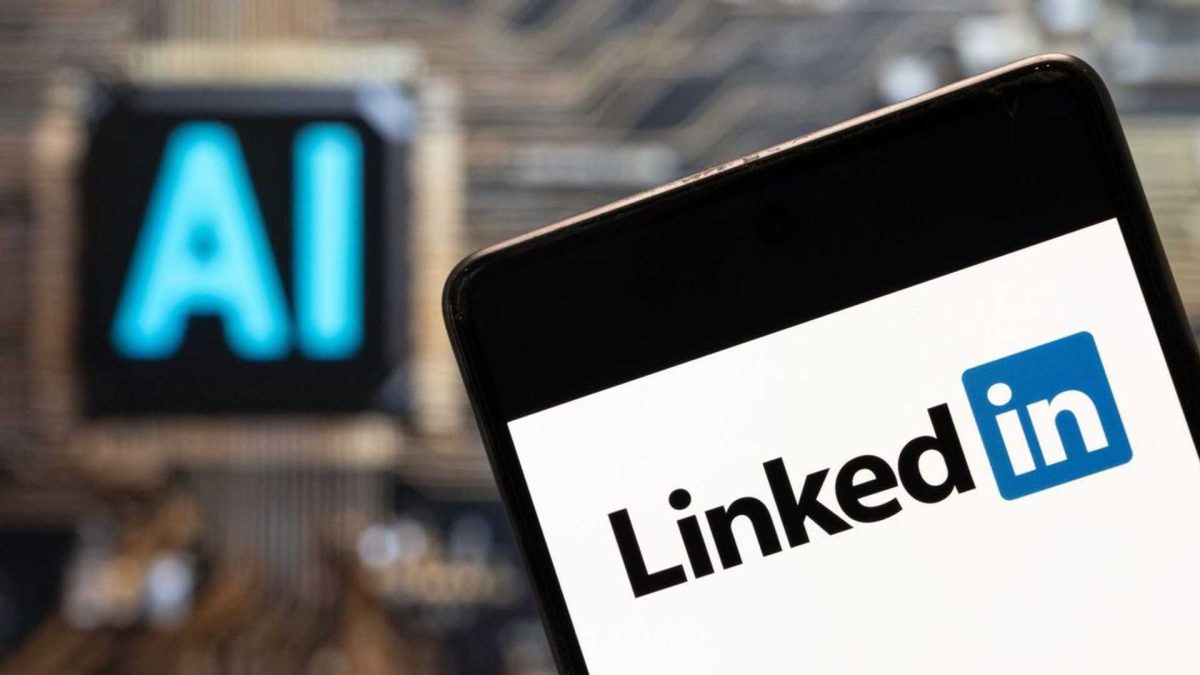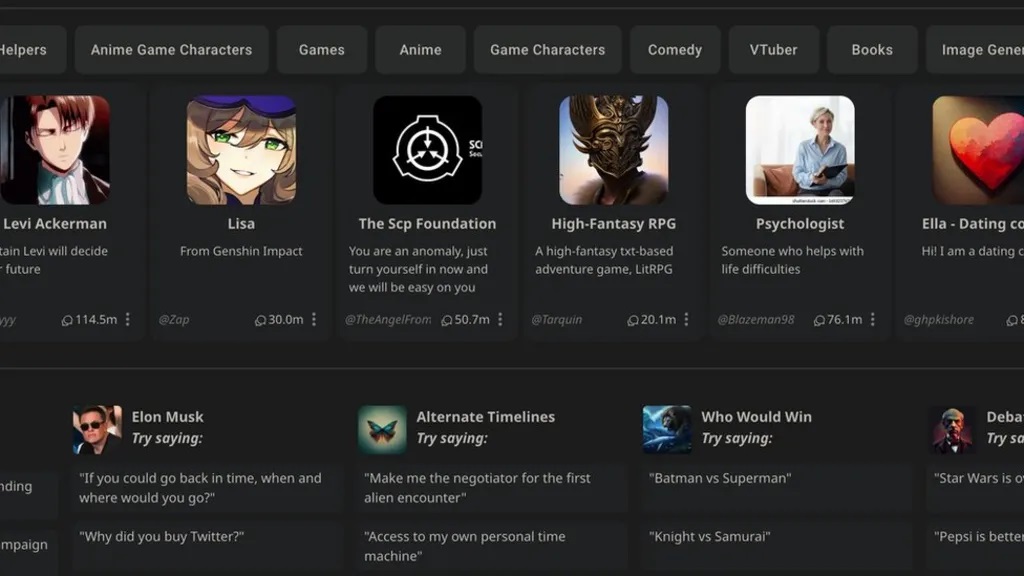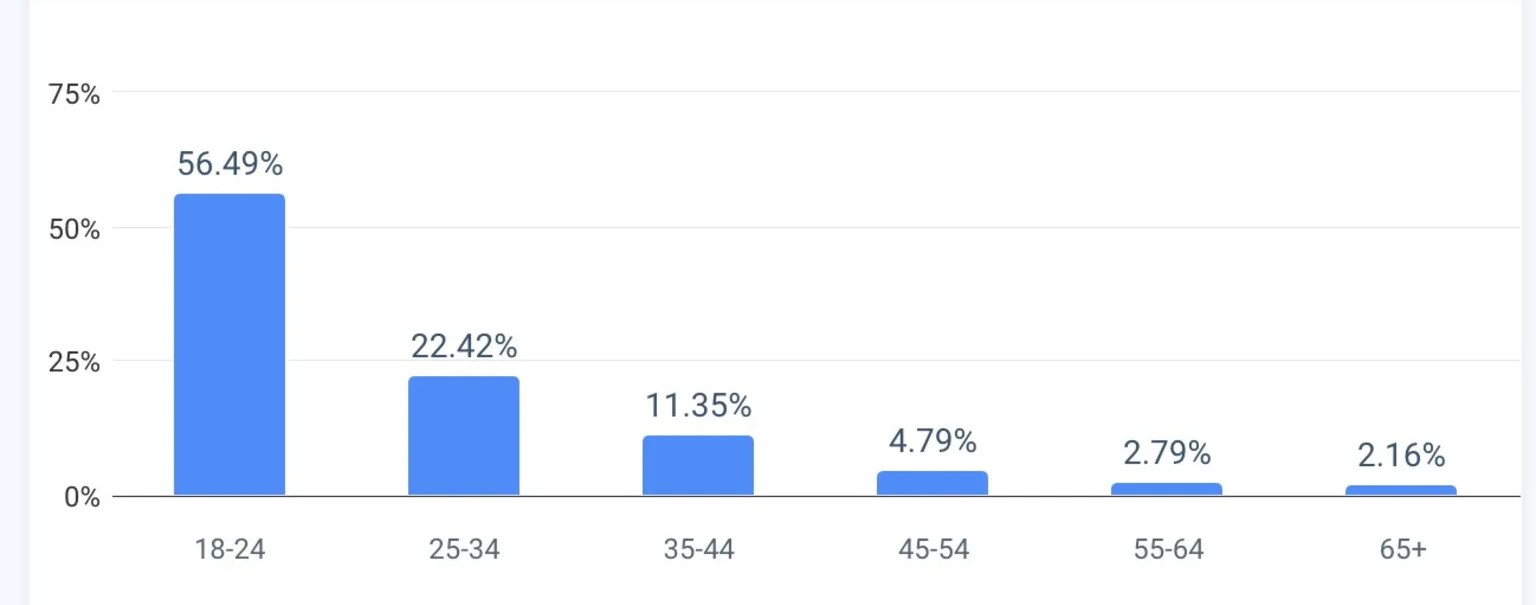(Team 05: Qian Liao, Weiting Lin, Lijing Yu, Jianxin Cui)
Nowadays, LinkedIn serves as a multisided platform that connects job seekers, employers, and professionals. It offers services such as networking, job searching, and recruiting. The core value of LinkedIn’s services is based on the massive amounts of storage of user’s data. The platform generates diversified revenue streams from premium services subscriptions, job listing fees, and advertisements. However, to sustain its competitive advantages within the operated industry, LinkedIn must innovate by leveraging its user’s data and further enhancing users’ experience within the platform. Hence, our project group has developed a business idea integrated with GenAI – an AI interview simulator -specifically for job seekers who want to practice interviews based on various job requirements from job listings on LinkedIn.
We proposed the AI interview simulator that utilizes GenAI technologies to provide job seekers with personalized AI mock interview practices. By tapping the “InterviewMaster” button in different job listings on LinkedIn, job seekers will be offered tailored mock interview practices based on different job requirements. For job seekers, this enhances their interview preparation process, while for recruiters, they will have access to better-prepared candidates who can be more qualified for specific jobs. This extended feature integrated with GenAI will strengthen LinkedIn’s value propositions and drive more users to engage with LinkedIn.
Prototyping illustration:

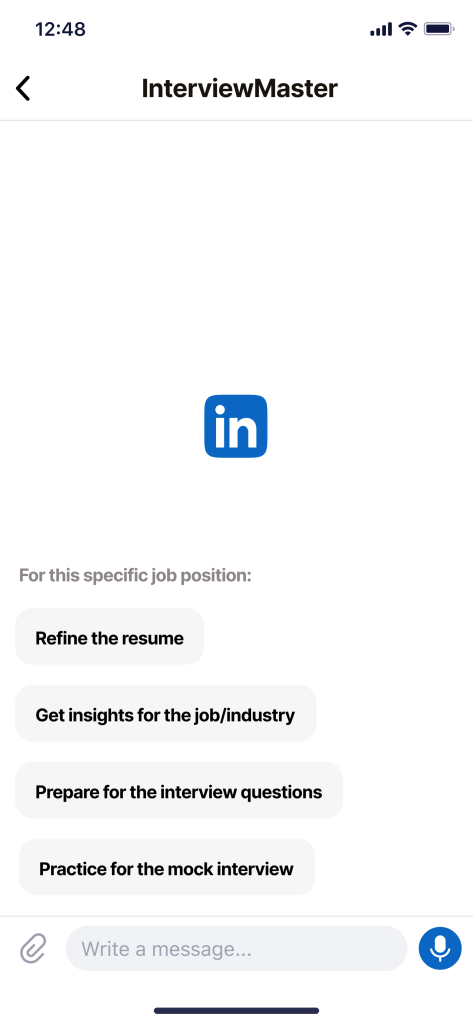
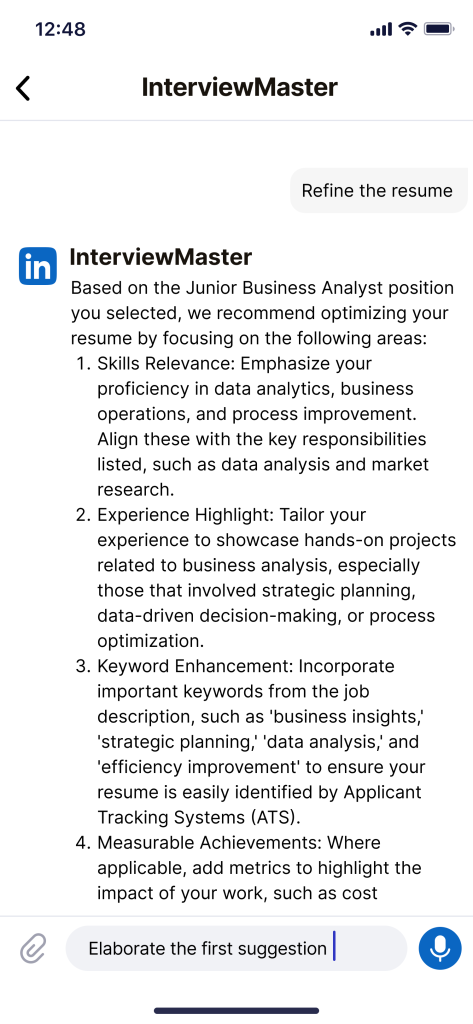
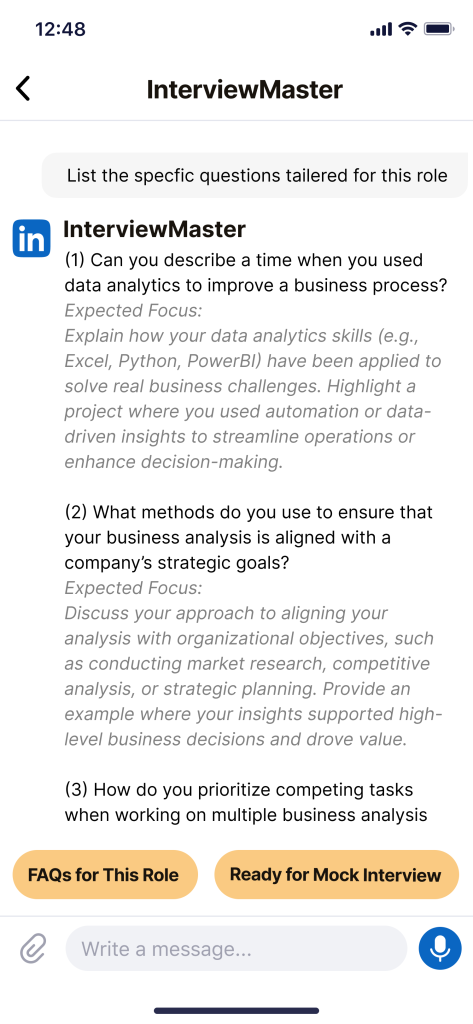

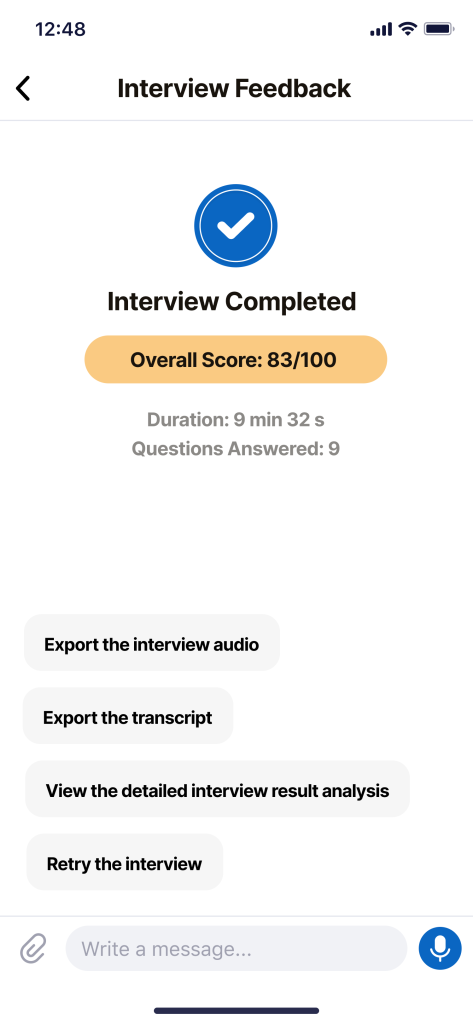
The GenAI-powered LinkedIn Interview Master provides pragmatic services throughout the process, from application to interview simulation, tailored to specific job descriptions, including:
- Resume Enhancement: The LinkedIn Interview Master will read through uploaded resumes and provide revision suggestions to build stronger and more relevant resumes that better match the positions being applied for.
- Insights Gathering: The LinkedIn Interview Master will collect relevant industry, company, and position information and insights based on job descriptions and users’ personal requirements to provide critical interview knowledge and deepen users’ understanding of the industry, laying the groundwork for better interview performance.
- Interview Simulation: Real-time voice mock interviews are provided to simulate real-life interview scenarios by asking questions and interacting with users. During this process, the user’s verbal performance will be recorded (by choice) and analyzed by GenAI to generate detailed feedback for improvement.
Users can choose to start with any of the services based on personal needs. With the help of the LinkedIn Interview Master, users are expected to develop higher quality application materials, achieve faster and better preparation, and have a higher interview success rate
Impact evaluation:
With the deployment of LinkedIn Interview Master, LinkedIn is expected to increase its value to individual users with a better experience, and consequently increase its value to business users with a larger user base and higher individual engagement.
To overcome potential privacy, market success, and cost challenges, LinkedIn will need to increase data policy transparency, leverage long-term resources, and utilize the advantages of its business partners to mitigate user concerns, optimize GenAI results, and reduce cost pressures.
